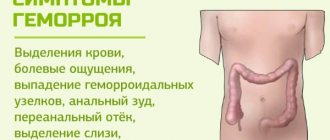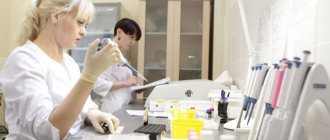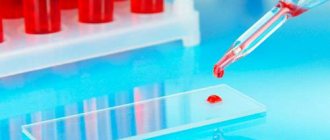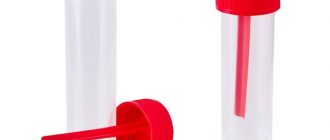Treatment of pathogenic flora
Dysbacteriosis is one of the most common reasons for an increase in the concentration of pathogenic bacteria in a child’s intestines. To treat the disorder in infants, it is necessary to exclude foods high in fiber, starch and complex carbohydrates from the mother’s diet (during breastfeeding). When artificial feeding, it is necessary to replace the formula. At the same time, certain bacteriophages (drugs that absorb pathogenic bacteria) and probiotics (drugs that provide an increase in beneficial microorganisms) can be prescribed.
For older children, an integrated approach according to the same scheme is used as a treatment for dysbiosis: diet, therapy with bacteriophages and probiotics. Foods containing starch and sugar are excluded from the diet and the amount of fruits and vegetables consumed is reduced. If the cause of the growth of pathogenic flora is a more serious illness (pancreatitis), then treatment should be started only after additional examination and relevant tests. After receiving the results, the doctor will prescribe appropriate therapy.
If dysbiosis or an inflammatory process affects only one part of the intestine, then this may be a sign of an excess of carbohydrate compounds in the diet or disturbances in the functioning of the digestive system. This can happen with gastritis or pancreatitis. For treatment, you need to adjust your diet and meal times. The child must eat at a certain time every day. The foods consumed should be high in vitamins and minerals. It is necessary to increase the amount of meat and dairy products. Sometimes taking probiotics is necessary.
https://youtube.com/watch?v=wOeceP9fD2E
https://youtube.com/watch?v=wOeceP9fD2E
The presence of iodophilic flora in stool analysis is not always a reason for panic, since its appearance can be provoked by a change in diet. In this case, taking medications is not required; the child’s body will gradually rebuild itself and cope with pathogenic bacteria. If a child has a weakened immune system or is undergoing chemotherapy, then taking probiotics is definitely indicated. To ensure that the appearance of pathogenic microorganisms in test results does not come as a surprise to parents, it is necessary to periodically examine the child even without the appearance of any symptoms.
Features of the formation of iodophilic bacteria
The intestinal microflora consists of beneficial and opportunistic microorganisms. In the first case, we are talking about lacto- and bifidobacteria, which take part in the digestion process, the synthesis of organic substances, and strengthening intestinal immunity. As for the opportunistic flora, it is represented by cocci, rods, yeast-like cells, which, in an amicable way, enhance intestinal motility and process proteins. Ideally, beneficial lactic acid bacteria should dominate, while opportunistic bacteria should remain in the minority and predominate in the dormant stage.
With increased activity of iodophilic flora, fermentation processes are noticeably enhanced, as a result of which the natural digestion of food is disrupted. The child begins to be bothered by severe signs of dyspepsia, indigestion and more. To restore the balance of the intestinal environment, additional intake of probiotics and the implementation of other methods of conservative therapy are necessary.
- What is the most effective remedy for acne and acne?
- How to drink a martini correctly
- Types of mental disorders
Composition and varieties
Faced with this indicator in the results of stool tests, most parents are interested in what iodophilic flora is. This is a conditionally pathogenic intestinal microflora, consisting of certain types of microorganisms. Its formation is provoked by the presence of enzymes that promote the processing of starch into glucose compounds. As a result of bacterial activity, sugar is separated into individual elements and fermentation occurs, in which cocci and yeast cells actively participate.
Iodophilic flora in a child’s feces is divided into two groups:
- Clostridia, which do not pose a health hazard.
- Pathological flora, in which the presence of cocci and bacilli in large quantities is observed.
In a baby, they should normally be absent; sometimes a stool test can reveal them in case of constipation, but in small quantities.
Clostridia as part of the iodophilic flora
Why is iodophilic flora dangerous?
The intestines of a child, like an adult, are populated by opportunistic and beneficial microflora. The latter is represented by bifidobacteria and lactobacilli. They participate in digestive processes, help the immune system function and prevent the proliferation of harmful microorganisms: cocci, yeast cells, rods. If fermented milk or beneficial bacteria are in the minority, an iodophilic environment is detected.
Note! Pathogenic microflora takes the place of beneficial microorganisms and has a detrimental effect on intestinal function and undermines the immune system.
Is treatment necessary?
If iodophilic flora is present moderately in the feces of a child and an adult, then specific therapy is not carried out. The patient is prescribed a diet that excludes:
- dairy products;
- bakery products;
- cabbage;
- large quantities of fresh fruits and berries.
All of the above food products provoke the process of fermentation and rotting, therefore, if the deviation in question is present, they should be excluded. The diet is followed until the coprogram indicators return to normal.
In more serious cases, patients are prescribed pharmacotherapy. It may be based on the application:
Probiotics and prebiotics. They normalize the state of intestinal microflora and eliminate dysbacteriosis. Drugs in this group include Acylact, Lactimak, Hilak Forte, Linex, Acidolak, etc. The course of therapy lasts at least 2 weeks. Antibiotics. For infectious diseases of the gastrointestinal tract, medications from this group are an indispensable element of therapy. In this case, Klebsiell, Intesti and other vitamin complexes are prescribed. Since this deviation may be accompanied by diarrhea, the body will lose nutrients
It is extremely important to maintain their balance in order to avoid the development of vitamin deficiency. Therefore, patients are additionally prescribed multivitamins: AlfaVit, Aevit, Revit, etc.
The attending physician monitors the results of the treatment. If necessary, one or another drug can be replaced or canceled completely. But it is unacceptable to make a decision on your own, since iodophilic flora in feces is a serious threat to the patient’s health.
Drug treatment
Treatment of a child who has iodophilic flora detected in his stool should begin only after consultation with a pediatrician. This sign may be a symptom of a specific disease of the digestive tract, and then it will be necessary to direct all efforts to eliminate the current pathology. But this is decided in each specific case by a pediatrician.
Regarding the general principles of treatment, it is initially necessary to destroy the pathogenic microflora; this can be done with the help of Tetracycline, Cephalosporin, Penicillin, Metranidazole and other antibacterial drugs.
Next comes a course of restoring the normal microflora of the child’s intestines and it consists of the following medications:
- Probiotics for populating the intestines with beneficial bacteria - Linex, Bifiform, Bifidumbacterin, Acylak, Probifor, etc.
- Prebiotics - in addition to beneficial bacteria, contain a substrate for development and help them more actively populate the child’s intestines. These are Hilak-Forte, Lactusan, Duphalac, etc.
- Herbal medicines for normalizing intestinal motility with St. John's wort, oregano, calendula, yarrow.
- Bacteriophages for the fight against pathogenic and opportunistic bacteria - Klebsiella, Intesti, Pseudomonas, Sextaphage, etc.
Categories
AllergistAnesthesiologist-resuscitatorVenereologistGastroenterologistHematologistGeneticGynecologistHomeopathDermatologistPediatric gynecologistPediatric neurologistPediatric urologistPediatric surgeonPediatric endocrinologistNutrologistImmunologistInfectious disease specialistCardiologistCosmetologistSpeech therapistElorologistMammologistMedical lawyerNarcologistNeurologistNeurosurgeon NephrologistNutriciologistOncologistOncourologistOrthopedist-traumatologistOphthalmologistPediatricianPlastic surgeonProctologistPsychiatristPsychologistPulmonologistRheumatologistRadiologistSexologist-AndrologistDentistTherapistUrologistPharmacistPhytotherapistPhlebologistSurgeonEndocrinologist
When is opportunistic flora present in the intestines?
Iodophilic flora in a child’s feces can be detected if the diet has changed and the baby begins to receive more carbohydrates. At the same time, the movement of food through the intestines slows down, and fermentation processes may occur. Excess fruit in the diet in some cases causes putrefactive dyspepsia.
Treatment is not required when introducing new products. Gradually, the intestines will be populated by the necessary bacteria, and pathogenic microorganisms will retreat.
Children who are naturally weakened, have low immunity, or have been under the influence of chemotherapy will not cope with the disease on their own. They are prescribed probiotics.
Iodophilic flora may be present in a child’s stool if he has:
- the digestion process is disrupted in the stomach itself or in the upper parts of the digestive tract;
- accelerated movement of food through the intestines;
- nutrients are not absorbed actively enough in the small intestine;
- presence of pancreatic pathology.
The concentration of such inclusions can be found within the appendix in its iliac part.
Sources
- https://KidAbout.ru/malenkie-deti/jodofilnaya-flora-v-kale-u-rebenka-prichiny-simptomy-i-lechenie/
- https://probakterii.ru/prokaryotes/in-medicine/jodofilnye-bakterii-v-kale-u-rebenka.html
- https://AnalizTut.ru/perechen-analizov/kal/jjodofilnaya-flora-v-kale.html
- https://progastromed.ru/diagnostika/jodofilnaya-flora-koprogrammy.html
- https://probakterii.ru/prokaryotes/vital-functions/jodofilnaya-flora-v-koprogramme.html
- https://vseozhivote.ru/kishechnik/defekatsiya/jodofilnaya-flora-v-kale.html
- https://probakterii.ru/prokaryotes/in-medicine/jodofilnaya-flora-v-kale-u-rebenka.html
- https://www.deti34.ru/diagnostika/kal/jodofilnaya-flora-patologicheskaya-v-koprogramme-u-rebenka.html
- https://analiz.neboleite.com/informacija/rassmotrim-vsju-vazhnuju-informaciju-o-tom-chto-takoe-jodofilnaja-flora-v-kale-u-vzroslogo-i-chem-jeto-mozhet-byt- fraught/
- https://VseObAnalizah.ru/kal/jodofilnaya-flora-v-kale.html
- https://vpolozhenii.com/jodofilnaya-flora-v-kale-u-rebenka-patologicheskie-bakterii-v-koprogramme-chto-eto-znachit/
- https://LechimZapor.com/gruppy-porazheniya/deti/jodofilnaya-flora-v-kale-u-rebenka
- https://fb.ru/article/134230/o-chem-govorit-yodofilnaya-flora-v-kale-u-rebenka
Description of the flora of this type
Iodophilic bacteria in the human body provoke the occurrence of a fermentation process in the intestines. The conversion of starch into glucose is carried out by active substances. Under the interaction of microorganisms, it breaks down into organic components.
Fermentation is promoted by cocci and yeasts that accumulate inside the cells. All microorganisms involved in the process are divided into 2 main categories:
- pathological - cocci and bacilli, present in huge quantities;
- Clostridia are gram-positive bacteria that are found in the normal flora of the gastrointestinal tract and genital organs of women.
The place of localization of pathogenic microorganisms becomes the blind section of the intestine. Against the background of their increased growth, chyme is produced, as a result of which the acid reaction accelerates. Fermentation occurs under the influence of this process.
Treatment options
If a large volume of iodophilic bacteria is detected in a coprogram, the reason for this phenomenon may lie in problems such as:
- fermentative dyspepsia;
- accelerated passage of intestinal contents through the colon;
- lack of enzymes;
- problems with the pancreas;
- bowel irritation;
- insufficiency of gastric digestion;
- inflammation in the intestinal lumen;
- dysbiosis.
It is worth remembering that to establish the cause
diseases can only be diagnosed by a qualified specialist when carrying out all the necessary studies. If pathogenic microflora is found in feces as a result of serious problems with the gastrointestinal tract, pancreas, or inflammation in the intestines, then the pathology that affected the proliferation of bacteria must first be diagnosed.
When these diseases are eliminated, the volume of iodophilic microflora is often normalized. In addition, treatment for dysbiosis is prescribed. It involves adjusting your diet and using special medications. Diet for dysbiosis
and the increased content of opportunistic microflora in the coprogram is to exclude simple carbohydrates, starches and sugars. Foods that can cause fermentation and gas formation in the stomach are removed from the diet:
- cabbage;
- bread;
- legumes and starchy vegetables;
- unprocessed vegetables;
- milk and dairy products;
- fruits.
As for the use of medicines, probiotics and prebiotics saturated with lacto and bifidobacteria are most often used. Additionally, if a person is taking antibiotics
, then it is advisable to cancel them. In any case, if you suspect this kind of disease, you should consult a doctor to accurately determine the cause of the disease and prescribe appropriate treatment.
After the birth of a child, parents need to donate stool for examination.
When analyzing, special attention is paid to the presence of special flora in the material. Normally, a child does not have iodophilic flora in his stool.
If it is detected during the analysis, then this indicates a decrease in the number of lacto- and bifidobacteria in the intestines. This process occurs due to the replacement of beneficial bacteria with harmful microorganisms. Let's take a closer look at what iodophilic flora is and how this disease is treated.
Iodophilic flora in the human body is a variety of bacteria that cause fermentation in the intestines. Active substances ensure the conversion of starch into glucose. As a result of exposure to microorganisms, glucose compounds break down into organic components
. The fermentation process is activated by the influence of yeasts and cocci, which are grouped or concentrated inside the cells. Microorganisms are divided into two main groups:
- Clostridia are gram-positive bacteria that are part of the normal flora of the gastrointestinal tract and female genital organs. Bacteria can be detected as a result of analysis collected from the oral cavity and from the surface of the skin.
- Pathological - contains large quantities of pathogenic cocci and various rod structures.
Pathogenic flora is localized in the blind section of the intestine. As a result of increasing concentration, chyme is produced, which accelerates the acid reaction. This interaction leads to fermentation. The determination of iodophilic flora occurs within the framework of coprogram analysis. Indications for carrying out a coprogram in a child include symptoms such as bloating, upset stool, flatulence (increased gas formation). If, as a result of the analysis, pathogenic flora is detected and corresponding symptoms are present, then this may be a manifestation of the following diseases:
- intestinal dysbiosis;
- chronic pancreatitis;
- inflammatory processes in the intestines;
- gastritis.
Pathogenic flora in the feces of both an infant and an older child can appear with increased peristalsis of the large intestine or as a result of putrefactive dyspepsia. Its appearance is considered normal if the child’s diet includes a lot of vegetables and fruits or foods high in fiber.
Diagnostic methods
A coprogram, which is used to examine stool, will help diagnose the presence of pathogenic bacteria. The laboratory performs chemical, visual and microscopic analysis of the biomaterial.
What is a coprogram, and how is it passed?
A coprogram is a study that determines the type of bacteria, the stage of the inflammatory process and infection, and also helps to identify in which part of the intestine the problem arose. The correct result can only be obtained after analyzing fresh material, because pathogenic microorganisms die in yesterday’s stool. During the study, the sample is stained with an iodine-containing reagent. Iodophilic bacteria in a child’s stool become dark blue, brown or black, while the beneficial components remain uncolored.
Before donating stool, you must adhere to some rules:
- Dishes that can stain the material are excluded from the diet.
- Two days before the test, you should avoid foods rich in starch, carbohydrates and fatty foods.
- Only a sterile container is used for analysis.
- Personal hygiene is required.
What to do if pathological iodophilic flora is detected in the coprogram?
Restorative measures for children and adults are considered separately. The latter will need to select the appropriate medication and adjust the diet when identifying abnormalities in the gastrointestinal tract. A significant measure in terms of treatment should be considered to stop the further growth of pathogenic microflora and reduce its level. In this case, antimicrobial drugs are prescribed, namely bacteriophages. We are talking about such names as Sextaphage, Intesti and others.
The exclusion of iodophilic bacteria in a child’s stool implies:
- revision of the maternal diet, from which fiber, starch and complex carbohydrates are excluded;
- transferring the baby from one infant formula to another with artificial feeding;
- if the child is already feeding on his own, he can be prescribed bacteriophages that neutralize pathological flora and restore intestinal balance;
- prescribing probiotics, the list of components of which contains live lactobacilli.
In addition, improvement and elimination of iodophilic flora in a baby’s feces is impossible without eliminating sugar and carbohydrates from the diet. Such changes must be maintained until bowel function is restored. All this is necessary, despite the fact that in childhood the presented pathology does not provoke unpleasant or painful sensations. The baby's health will gradually deteriorate and after a few years this will lead to the development of gastritis or colitis.
It is much easier to prevent such a problem in advance. To do this, you just need to eat properly and nutritiously, take standard tests annually (blood, urine and, of course, feces), and also eliminate exposure to bad habits, as well as periodically use vitamin and mineral complexes.
Causes of dysbiosis
Reasons for the development of dysbiosis
Dysbacteriosis is a process in which beneficial microorganisms decrease in number, and harmful bacteria increase, and as a result, the digestion process is disrupted. The condition is accompanied by bloating, diarrhea, pain during bowel movements and the release of gases. In infants, the presence of iodophilic flora in the intestines is common for several reasons. Firstly, the digestive system in the first months of life is immature; there is not enough beneficial flora to digest incoming food.
Secondly, a child from 5 months begins to actively explore the world, the most common way is to taste everything. No matter what antibacterial agents parents use, they do not guarantee complete protection of the baby from bacteria. Only a competent specialist can accurately determine the cause of the phenomenon on the basis of a comprehensive examination, a mandatory part of which is the child’s coprogram.
What to do if the test for bacteria is positive?
Iodophilic flora in the coprogram of an infant requires a quick response from parents to the pathology. To normalize the balance of microflora, you can use some methods, which depend on the cause of the problem. Treatment should begin with the safest methods that have minimal impact on the gastrointestinal tract.
Drug treatment
If there is no result after following a diet, it is necessary to take probiotics that change the balance of the internal intestinal microflora in the baby. Such drugs increase the number of beneficial bacteria and normalize the intestinal microflora. Sometimes you have to take bacteriophages along with probiotics. For the smallest children, medications are prescribed that stimulate an increase in the number of bifidobacteria and lactobacilli to absorb pathogenic microorganisms.
If iodophilic flora was detected only once, then indicators should be monitored and examined after medical treatment. There is no need to panic if this condition develops, since in most cases the pathology indicates the adaptation of the gastrointestinal tract to new complementary foods.
Decoding the results
The analysis is interpreted by a specialist according to several indicators:
| Macroscopy | ||
| Form | Decorated | Pasty - pathology of the pancreas. Gruel - colitis, dyspepsia as a result of fermentation. Foamy feces - salmonellosis, intestinal infection. |
| Color | Yellow, light brown/brown | Food products are colored green, red, black, but this shade disappears when coloring foods are removed from the diet Gray – obstruction of the bile ducts Yellow – antibiotic therapy or enteritis An admixture of scarlet blood – bleeding in the large intestine, hemorrhoids Black – bleeding in the stomach, small intestine |
| Smell | The aroma is mild, moderate, smells like feces | Stench – problems with the pancreas Putrid – constipation Sour – fermentation |
| Consistency | Soft/dense | Liquid – diarrhea Sheep – constipation |
| pH | Neutral (slightly alkaline) | Acidic – problems with the liver and gall bladder Severely sour – fermentation-based dyspepsia Alkaline – colitis Severely alkaline – putrefactive dyspepsia |
| Reaction to occult blood | Negative | Positive |
| Microscopy | ||
| Muscle fibers | No | Present when there is a disturbance in the functioning of the pancreas and increased peristalsis |
| Neutral fats | No | Pathology of the small intestine, pancreas |
| Fatty acid | A little | Biliary system diseases |
| Soap | Minimum availability | In excess: insufficient pancreatic secretion, problems with bile flow, constipation. |
| Plant fiber | Moderately | Too much – lack of bile, enzymes, accelerated intestinal evacuation |
| Iodophilic flora | No or minimum | 1+ or 2+: dysbiosis, fermentative dyspepsia, insufficient pancreatic secretion, digestive disorders in the small intestine |
| Starch | Not detected | + – Carbohydrate foods |
| Slime | No | Yes – colitis, increased secretion in the large intestine |
| Leukocytes | No | Yes – inflammation |
| Red blood cells | No | Yes - bleeding |
| Helminth eggs | No | Yes – helminthic infestation |
| Protozoa | No | Yes – helminthic infestation |
Feces are a mirror of biochemical transformations in the human body
This is especially important for diagnosing the small intestine, which is traditionally difficult to access for examination.
Causes
Pathogenic microorganisms increase their activity for many reasons:
- Long-term uncontrolled use of antibiotics. Drugs of this drug group destroy beneficial flora, which ultimately leads to the proliferation of pathogenic microbes.
- Improper diet, which is dominated by simple carbohydrates and starch, not enough protein foods, and not enough meat products.
- In infants, the activity of opportunistic bacteria can be caused by physiological changes in the digestive system, especially when introducing complementary foods or when switching to solid foods.
- Weakening of the body's immune defense.
- Helminthiases.
- Accelerated evacuation of feces (increased peristalsis).
- Malfunctions of the pancreas.
- Small amount of gastric juice.
- Lack of bile.
- Poor nutrition of a nursing mother.
- Enzyme deficiency.
- Any disturbances of the digestive processes.
- Dysbacteriosis.
- Gastritis with low acidity.
- Pancreatitis.
Preparation and procedure for submitting a coprogram for a newborn and infant
If your baby has been prescribed a stool test, you must properly prepare the baby and collect the stool
This is very important for the accuracy of the indicators. To avoid difficulties in making a diagnosis and the need for repeated analysis, follow some rules:
- Before collecting material, you should not give the baby laxatives, sorbents, place a heating pad on the tummy, or give enemas.
- Stool must be collected in a special container with a spatula built into the lid, which can be purchased at any pharmacy.
- If the baby is already receiving complementary foods, then a few days before the test it is advisable to refuse it.
- It is best to collect the material in a container in the morning and immediately take it to the laboratory. But there are situations when this is impossible to do. For example, if the baby defecated at night, the stool can be stored in a tightly closed container in a cool place until the morning. This can be done provided that the feces are immediately taken to the laboratory in the morning.
- A nursing mother should temporarily avoid medications containing iron and dyes.
How to properly collect feces for coprogram?
Before collecting the material, the baby needs to toilet the perineum and genitals. If possible, it is better to place the child on an oilcloth surface or sit on a potty before defecation (if age permits). This will make it easier to collect the feces. You can put a self-made diaper from a diaper on your baby. It is acceptable to take material for research from a diaper with filler, but if possible it is better not to use this method: firstly, liquid feces will be immediately absorbed, and secondly, the indicators may not be entirely accurate. It is necessary to take feces with a special spatula from several different places.
Do not put the entire contents of the diaper into the container, just 10-15 grams is enough. It is very important that urine does not get into the container along with feces.
To avoid the need for repeated studies, it is very important to adhere to all the rules. You can seek additional advice from a pediatrician or laboratory technician.
Causes of pathology
There are a number of reasons that can cause the development of iodophilic organisms in a child’s stool:
- Eating too much fruit. This entails the occurrence of putrefactive dyspepsia and, as a consequence, the development of pathogenic microflora.
- Digestive disorders in the small intestine.
- Digestion is disrupted directly in the stomach.
- Gastrointestinal diseases: pancreatitis, appendicitis, pain in the intestinal area.
- Dysbacteriosis in the child's body.
A focus of iodophilic flora appears in the ileum of the cecum, resulting in accelerated release of chyme. This provokes an acid reaction, which causes fermentation. Its development can be caused by a large amount of starch and complex carbohydrates, which are a good environment for the proliferation of bacteria. Microorganisms can appear in the child’s biomaterial only for a short time, after which the coprogram will again show normal results. Temporary disruptions are caused by high carbohydrate consumption shortly before the test.
A large amount of fiber and carbohydrates in a child’s diet are the main causes of increased gas formation and intestinal disorders. If such symptoms occur, it is worth getting tested. Iodophilic microflora can be a feature of the body and not disturb a person for a long time. This is an opportunistic environment, and under some circumstances harmful bacteria can develop. A pathological condition occurs if a child suddenly changes his diet and begins to eat more starch. It is necessary to consider why dysbiosis occurred and why this condition is dangerous for a growing organism. Food will pass more slowly through the intestines, where fermentation will occur. A large amount of fruit eaten leads to putrefactive dyspepsia. When changing your diet, you should not use medications. The body can begin to produce beneficial bacteria on its own. But children with birth defects associated with weakened immune systems are given probiotics.
Exceeding the norm and how to deal with it
If you start talking about what the norm should be for iodophilic flora in a child’s feces, you should immediately explain that it should not be there at all. As a last resort, a value not exceeding 8 grams per full day is allowed.
It is also important that when it is detected, the consequence of the occurrence of these bacteria is ordinary dysbacteriosis, and not any disease.
In a child from 1 to 3 years of age, the digestive system is considered formed, so the study can be considered informative and reliable.
Regarding the question of whether therapeutic measures should be prescribed if there is an increased content of bacteria. First of all, if the child is breastfed, the mother should exclude complex carbohydrates, starch and foods high in fiber from her diet. It is also recommended to take probiotics and bacteriophages.
If the child is older, with dysbiosis, the problem is approached on an integrated basis:
- Probiotics are also prescribed.
- Treatment with bacteriophages is carried out.
- A strict diet is prescribed.
If pancreatitis is detected, the doctor is obliged to prescribe other tests and additional diagnostic measures. If the diagnosis is confirmed, appropriate adequate treatment is prescribed.
In any case, if pathological flora is detected in the child’s stool during analysis, there is no need to panic ahead of time. Even a change in diet can contribute to the appearance. You just need to wait a little, giving the child’s body time to adjust and get rid of pathogenic bacteria on its own.
And so that such a manifestation does not take you by surprise, you should at least occasionally devote time to the child, and carry out a coprogram without waiting for obvious symptoms.
The presence of iodophilic flora in stool scatology is not evidence of disease. This may mean nothing or be a signal of an imbalance in the intestinal microflora, which can lead to dysbiosis, and this is serious.
Detection of iodophilic flora in feces occurs during examination of the patient’s gastrointestinal tract using the scatological method, and excess of the norm is reflected as 1+.
This technique involves the following studies:
- chemical and hardware;
- macrostudy;
- microstudies of stool.
The study of stool microflora provides information about the presence of iodophilic microorganisms in the early stages, which helps to avoid many problems.
Reasons for the increase
There are a number of certain factors as a result of which iodophilic bacteria actively multiply. The main ones include:
- Treatment with antibiotics for a long time or too often. Drugs belonging to this category help destroy beneficial microflora. Microbes begin to accumulate in their place.
- Abuse of carbohydrate foods or foods that contain a lot of fiber. This could be, for example, fresh vegetables and fruits, pasta or baked goods, foods with a high starch content.
- Decreased immune system strength.
- Entry of helminths into the gastrointestinal tract.
If normal flora is in short supply, and the level of pathogenic flora increases, we can talk about intestinal disorders.
There are other reasons that can provoke an increase in indicators:
- ulcerative colitis;
- gastritis;
- acute and chronic intestinal pathologies;
- pancreatic diseases.
It is worth noting that not in all cases an increased level of pathogenic bacteria becomes a sign of any disease state. The amount of this flora can also be influenced by diet, especially before taking a stool test.
Treatment methods
After the final diagnosis is made, the specialist selects the optimal treatment options. Therapy can be carried out in several stages.
If the cause of the imbalance is some kind of disease of the gastrointestinal tract or pancreas, then all actions are aimed at eliminating them. Most often, treatment of disorders helps to normalize the intestinal microflora.
Drug therapy
In most cases, pre- and probiotics are prescribed, which contain lacto- and bifidobacteria.
If the patient is taking antibiotics, they are discontinued.
To prevent further proliferation of pathogenic bacteria in adults, antimicrobial drugs are prescribed: Piobacteriophage, Intesti, Klebsiella and others.
Nutrition
Nutrition adjustments also play an equally important role. Foods that can provoke the fermentation process must be excluded from the diet. These include:
- milk products;
- bakery products;
- cabbage;
- fresh fruits and vegetables high in starch and carbohydrates.
For a child who is able to feed himself, the diet also changes. If the baby is breastfed, the mother's menu is adjusted.
Signs and causes of pathology
- persistent long-term diarrhea or constipation;
- difficulty in normal bowel cleansing;
- appetite disorders;
- stomach ache;
- the presence of traces of blood in the stool;
- increased gas formation, bloating;
- change in the color of stool, a specific pungent odor;
- weight loss;
- undigested food in stool;
- disturbed sleep;
- restlessness, irritability, moodiness.
In children and adults, there may be no signs of microflora imbalance; in this case, treatment is not prescribed. The presence of iodophilic bacteria in stool can be caused by a temporary diet disorder on the eve of the study or a change in the usual diet. Sometimes such an imbalance is an individual characteristic of the child and does not cause him concern.
That is why the result of the analysis is taken into account by the doctor and, if necessary, repeated
Blurred symptoms, especially in infants, complicate the diagnosis of dysbiosis. The child may experience unpleasant sensations, but parents are not able to recognize them without obvious signs. The presence of blood in the stool indicates that inflammation of the gastrointestinal tract has joined the primary signs of imbalance.
Reasons for the development of iodophilic flora in the intestines:
- incorrectly compiled baby food menu (abundance of carbohydrate foods and plant fiber), non-compliance with the diet by the nursing mother;
- taking antibacterial drugs, especially without a doctor’s prescription;
- decreased immunity due to an infectious disease;
- parasitosis (worms, roundworms, etc.);
- gastrointestinal diseases (gastritis, pancreatitis, ulcerative colitis);
- food poisoning.
How does it manifest?
If the iodophilic flora is present in the child’s intestines for only a short period of time, then such a process can go completely unnoticed and asymptomatically, and you can only find out about the change by accidentally passing a stool test at that moment.
But if iodophilic flora is a symptom of the disease, then the child will certainly have other signs:
- Abdominal pain in the stomach area.
- Painful bowel movements.
- Diarrhea or constipation that lasts for a long time.
- Sleep problems.
- General poor health - moodiness, lethargy, fatigue.
- Losing weight with a normal diet.
- Refusal to eat.
- Changes in the consistency, odor and color of the stool (has an unpleasant odor, almost foul, the color can vary from pale yellow to greenish).
These signs can be observed in a child to a greater or lesser extent, but parents should pay attention to absolutely all oddities, since even a rise in temperature, belching or vomiting will help the doctor make a diagnosis and get rid of iodophilic flora in a timely manner.
Childhood disorder
In the absence of pathological changes, the child does not have iodophilic bacteria. However, this can also occur with frequent constipation. It is possible that in some cases bacteria in the coprogram are present in moderate quantities.
Certain reasons may contribute to an increase in the volume of pathogenic microflora. For example, a baby’s diet contains a lot of vegetables and fruits that provoke putrefactive dyspepsia.
In addition, similar problems are possible if there are disturbances in the digestion of food in the small intestine. The main factor of the disease is dysbiosis.
It is also possible for a baby to have iodophilic flora in the stool. This is often facilitated by pathological phenomena occurring in the small intestine.
But most often this condition can be observed during breastfeeding, when the mother’s diet consists mainly of foods that contain large amounts of carbohydrates and starch.
What is iodophilic flora in a child’s stool?
The need for laboratory testing of stool arises when a small patient complains. Iodophilic flora is a condition of the intestines in which the opportunistic environment, represented by cocci, rods, and yeast cells, which are responsible for the occurrence of fermentation processes in the body, begins to rapidly multiply. If the child has no complaints, even with an increased value of this indicator, we are not talking about pathology, treatment is not required. The iodophilic flora partly depends on the characteristics of the child’s daily diet.
Norm of bacteria in children
Only morning stool is suitable for testing for the presence of iodophilic bacteria, which can be collected or taken to the laboratory directly in the diaper. No matter what conditions, feces are stored, and after literally a few hours they are unsuitable for analysis due to the hydrolysis of starch in its composition. If the laboratory examination is planned, it will not hurt to prepare by excluding beets, greens, tomatoes, red fish and fatty meat from the diet. The coprogram of a child is considered a very informative method for studying the peculiarities of the functioning of the digestive organs. It includes visual inspection and studies using chemical elements and microscopy. Based on the results, it is possible to diagnose the following diseases accompanied by iodophilic flora:
Iodophilic flora in mucloviscidosis
- infectious lesions of the intestinal mucosa;
- inflammation of the intestinal walls;
- biobalance failure;
- cystic fibrosis;
- lactase deficiency;
- presence of parasites.
The interpretation of the analysis should be carried out only by a qualified specialist, taking into account all the accompanying data. The average norms of microorganisms in the intestines of a child in infancy are as follows:
- pathogenic bacteria, including iodophilus – 0;
- Escherichia coli – 300–400 million/g;
- cocci – less or up to 25% maximum;
- bifidobacteria – from 1010 to 1011;
- lactobacilli – from 106 to 107.
The upper threshold for the norm of pathogenic bacteria is determined by their type with additional clarifications. This indicator is influenced by the total amount of other active substances in the intestinal microflora. During bacteriological analysis, other names of microorganisms are also examined; we have indicated the main ones.
Symptoms
Iodophilic bacteria found in the feces of a child, when multiplying intensively, can cause the following clinical signs:
- pain in the abdominal area;
- diarrhea followed by constipation;
- flatulence;
- decreased appetite;
- lethargy;
- weight loss.
Deterioration of the child’s condition requires contacting a doctor
Since pathogenic microflora can provoke inflammatory processes that lead to disruption of the integrity of the intestinal walls, streaks of blood are often found in the stool. This sign is a reason to immediately consult a doctor.









